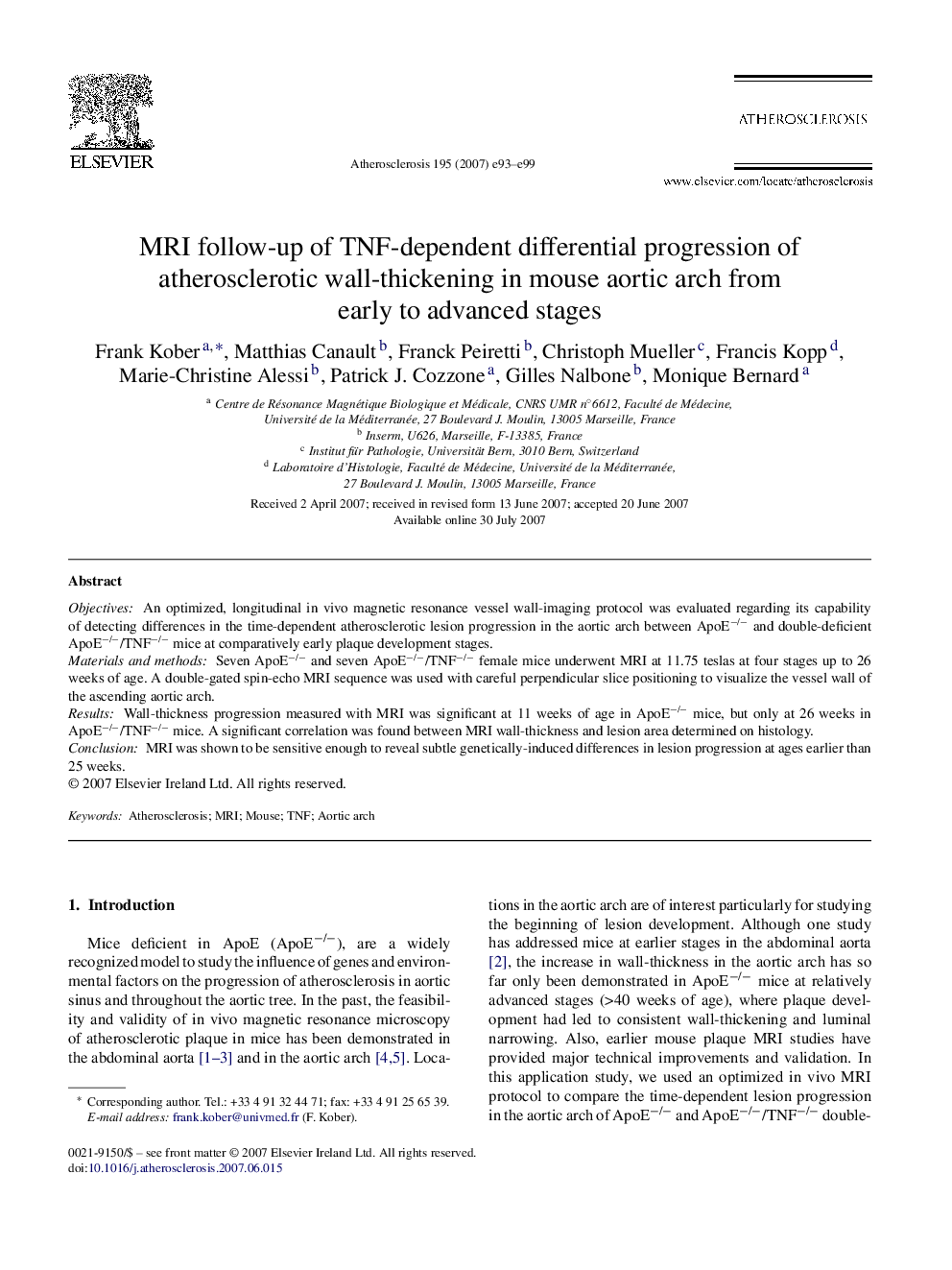| Article ID | Journal | Published Year | Pages | File Type |
|---|---|---|---|---|
| 2894217 | Atherosclerosis | 2007 | 7 Pages |
ObjectivesAn optimized, longitudinal in vivo magnetic resonance vessel wall-imaging protocol was evaluated regarding its capability of detecting differences in the time-dependent atherosclerotic lesion progression in the aortic arch between ApoE−/− and double-deficient ApoE−/−/TNF−/− mice at comparatively early plaque development stages.Materials and methodsSeven ApoE−/− and seven ApoE−/−/TNF−/− female mice underwent MRI at 11.75 teslas at four stages up to 26 weeks of age. A double-gated spin-echo MRI sequence was used with careful perpendicular slice positioning to visualize the vessel wall of the ascending aortic arch.ResultsWall-thickness progression measured with MRI was significant at 11 weeks of age in ApoE−/− mice, but only at 26 weeks in ApoE−/−/TNF−/− mice. A significant correlation was found between MRI wall-thickness and lesion area determined on histology.ConclusionMRI was shown to be sensitive enough to reveal subtle genetically-induced differences in lesion progression at ages earlier than 25 weeks.
